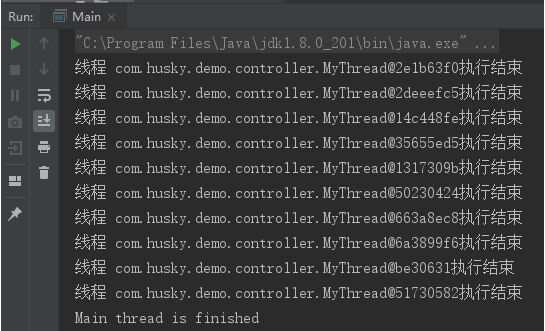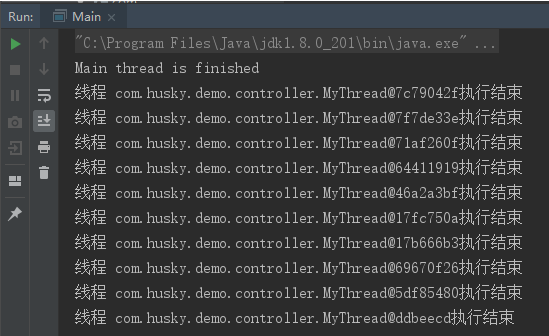前言:Thread.join方法
join()
join()是Thread类的一个方法。根据jdk文档的定义:
public final void join()throws InterruptedException: Waits for this thread to die.
join()方法的作用,是等待这个线程结束;但显然,这样的定义并不清晰。个人认为”Java 7 Concurrency Cookbook”的定义较为清晰:
join() method suspends the execution of the calling thread until the object called finishes its execution.
t.join()方法阻塞调用此方法的线程(calling thread),直到线程t完成,此线程再继续;通常用于在main()主线程内,等待其它线程完成再结束main()主线程。代码如下:
线程类
1 | /** |
Main
1 | public class Main { |
运行结果

如果没有join

源码
1 | public final void join() throws InterruptedException { |
1 | public final synchronized void join(long millis) |
分析
从代码中,我们可以发现。当millis==0时,会进入while(isAlive())循环;即只要子线程是活的,主线程就不停的等待。
我们根据上面解释join()作用时的代码来理解join()的用法!wait()的作用是让“当前线程”等待,而这里的“当前线程”是指当前运行的线程。虽然是调用子线程的wait()方法,但是它是通过“主线程”去调用的;所以,休眠的是主线程,而不是“子线程”!
所以isAlive()判断当前对象(例子中的t对象)是否存活,wait()阻塞的是当前执行的线程(例子中的main方法)
join方法是synchronized,Join方法实现是通过wait()。当main线程调用t.join时候,main线程会获得线程对象t的锁(wait意味着拿到该对象的锁),调用该对象的wait(),直到该对象唤醒main线程,比如退出后。这就意味着main 线程调用t.join时,必须能够拿到线程t对象的锁。
join方法用线程对象调用,如果在一个线程A中调用另一个线程B的join方法,线程A将会等待线程B执行完毕后再执行。
总结
join 方法是一个阻塞方法,用来进行线程之间的交流。线程 A 调用 线程 B 的 join 方法,则线程 A 将阻塞,线程 B 执行结束后 线程 A 开始执行。